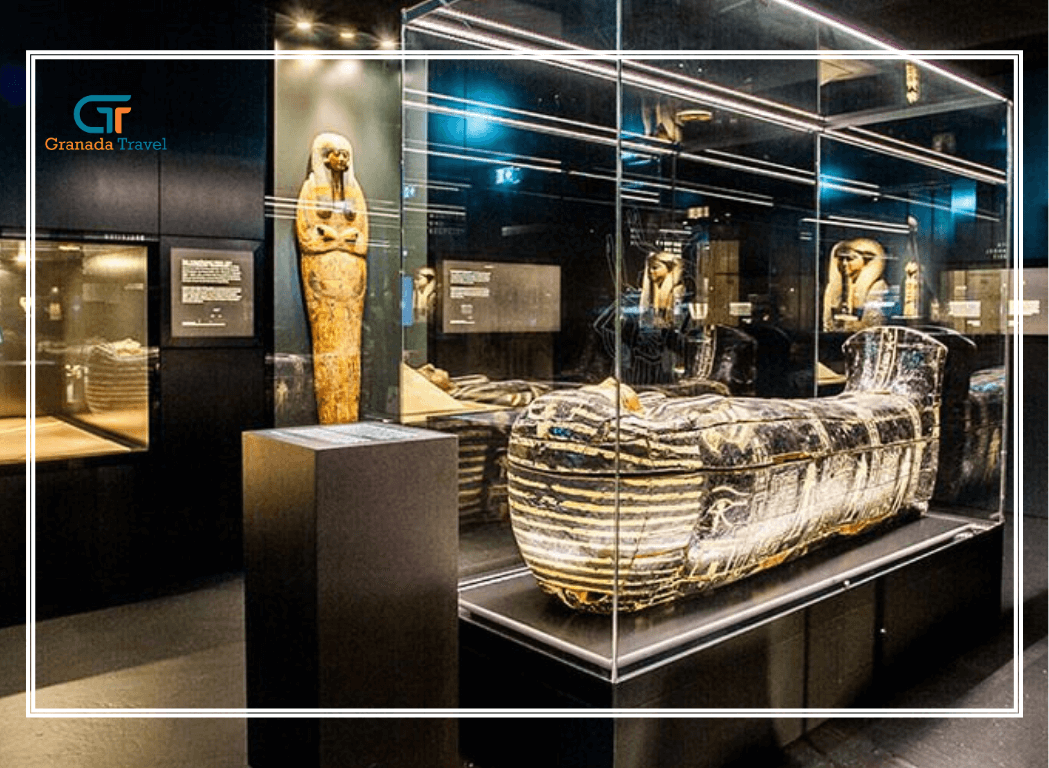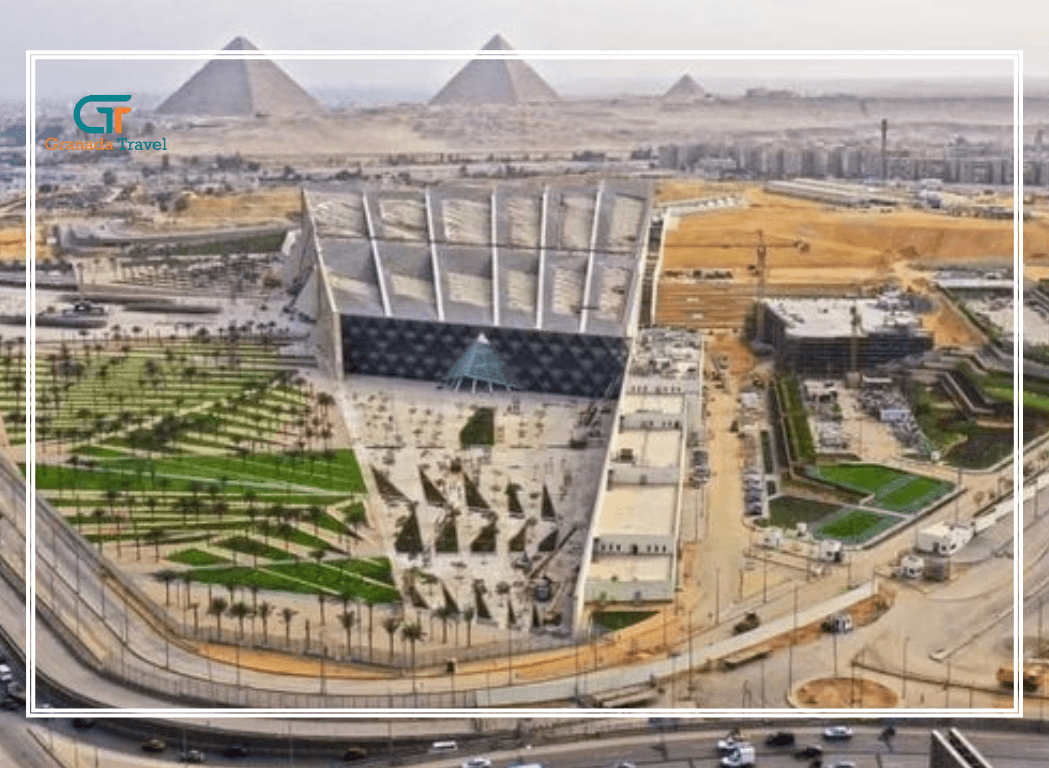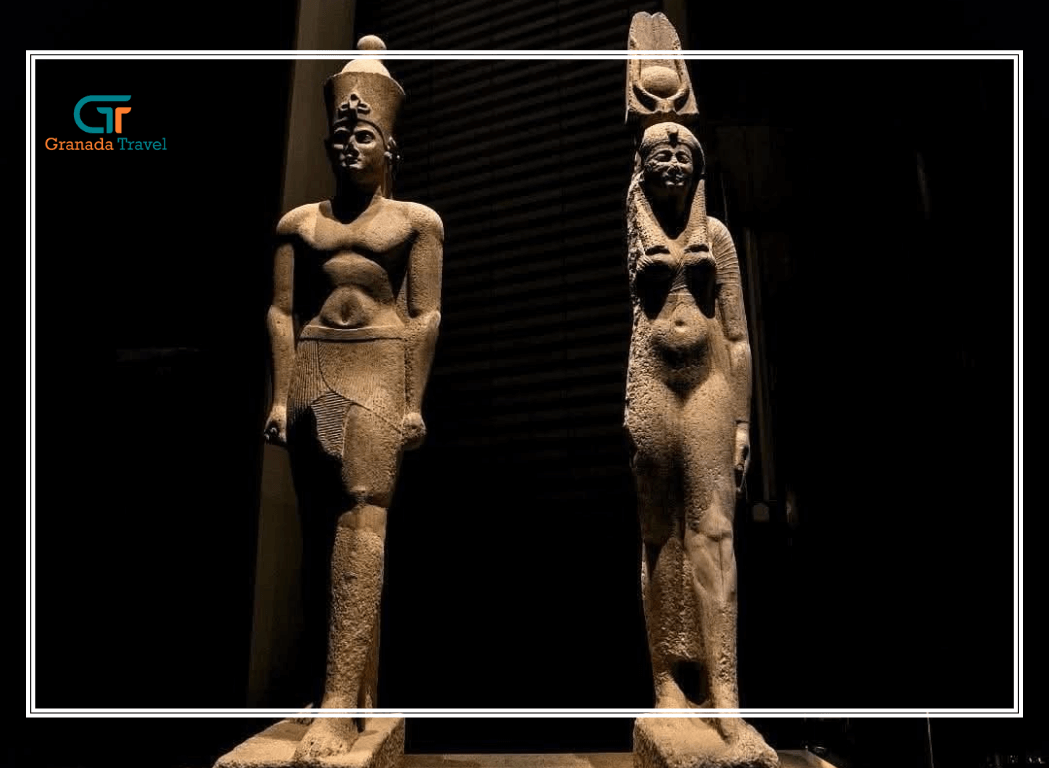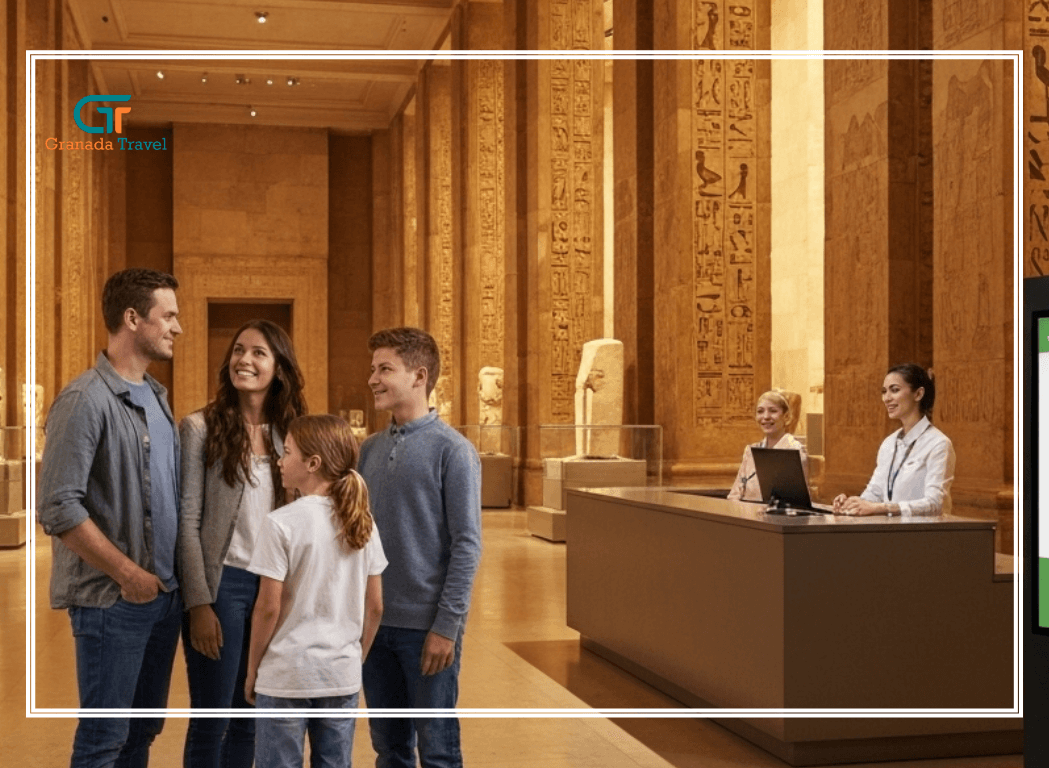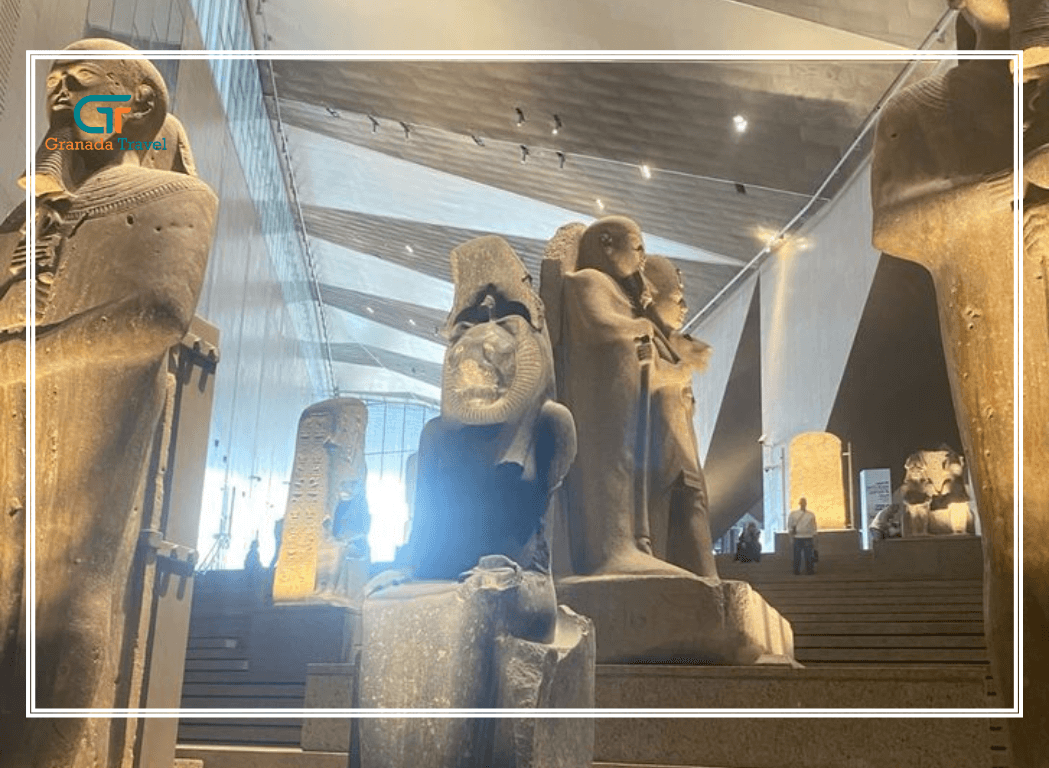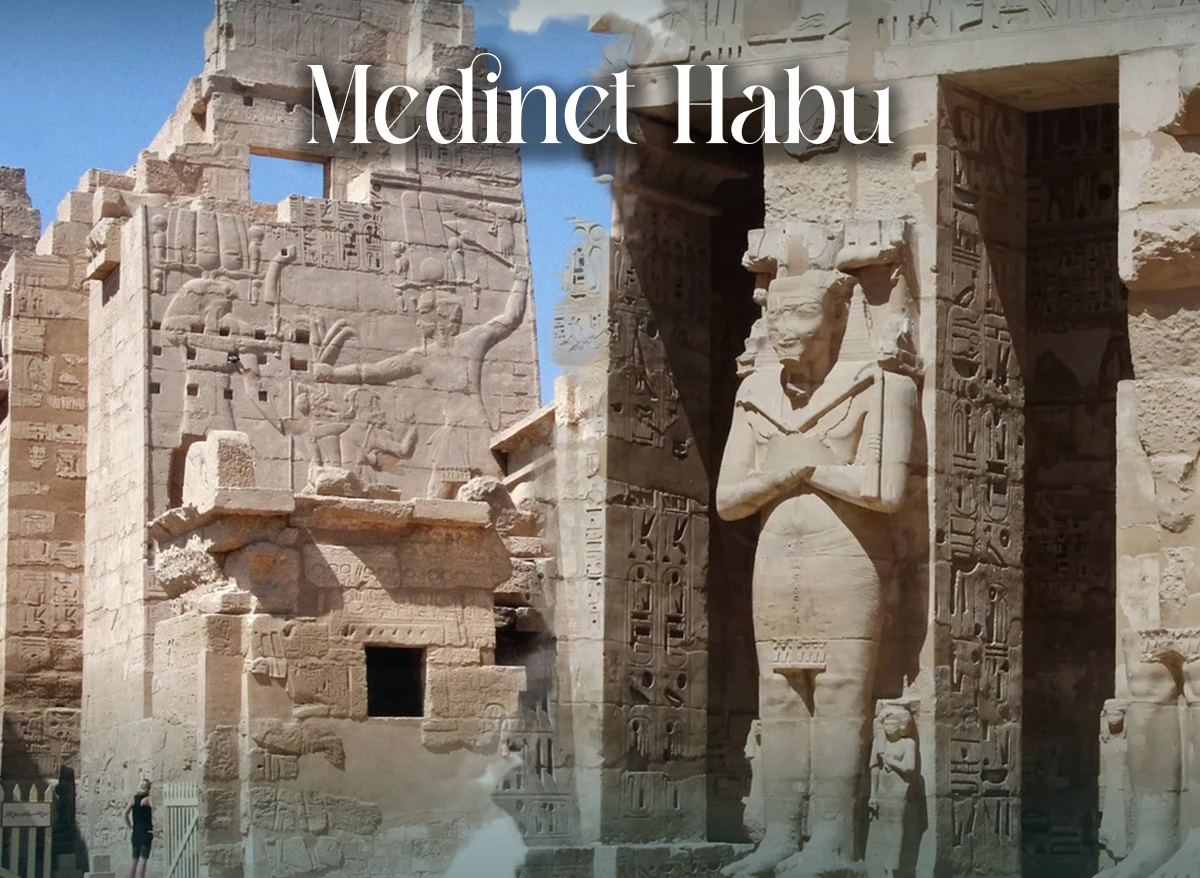
Medinet Habu: A Fortress of Pharaohs and Echoes of Empire in Ancient Thebes
Nestled on the West Bank of the Nile in Luxor, Egypt, lies Medinet Habu, a colossal complex that whispers tales of pharaonic power, divine devotion, and epic battles. Often overshadowed by its more famous counterparts like Karnak and Luxor Temples, Medinet Habu is a hidden gem, a fortified city within a city, and an essential stop for any serious explorer of ancient Egypt. More than just a temple, it was a royal palace, administrative center, and a formidable stronghold, making it one of the best-preserved and most historically significant sites in all of Thebes, Egypt.
Where is Medinet Habu? Unveiling its Strategic Location
To truly appreciate Medinet Habu, one must first understand its setting. Medinet Habu location is strategically placed on the West Bank of the Nile, a landscape dotted with mortuary temples and tombs of pharaohs and nobles. While many visitors flock to the Valley of the Kings, Medinet Habu Luxor offers a distinct experience, a tangible connection to the daily life and monumental achievements of a powerful pharaoh. If you're wondering where is Medinet Habu, simply head to the southern end of the Theban Necropolis, a short drive from the bustling modern city of Luxor. The impressive scale of the complex is immediately apparent upon arrival, hinting at the grandeur within.
The Architect of Grandeur: Medinet Habu Ramses III
The vast majority of the Mortuary Temple of Ramesses III at Medinet Habu was constructed during the reign of Pharaoh Ramesses III (c. 1186–1155 BC) of the Twentieth Dynasty. Ramesses III, often hailed as the "last great pharaoh" of the New Kingdom, built this magnificent complex not only as his eternal resting place but also as a testament to his military prowess and a vibrant center for the worship of Amun. He consciously emulated the architectural style of his illustrious predecessor, Ramesses II, at the Ramesseum, aiming to solidify his legitimacy and perpetuate the legacy of his powerful dynasty.
The construction of the Temple of Medinet Habu was a monumental undertaking, reflecting the wealth and resources of the New Kingdom. Ramesses III’s reign was a tumultuous period, marked by significant external threats, and the design of Medinet Habu clearly reflects this. It was conceived as a fortified complex, capable of withstanding sieges, a testament to the turbulent times in which it was built.
What was Medinet Habu Used For? A Multifaceted Marvel
What was Medinet Habu used for? The answer is multifaceted, showcasing its pivotal role in ancient Egyptian society. Primarily, it served as the mortuary temple of Ramesses III, a place where his cult would be maintained for eternity, ensuring his continued existence in the afterlife. However, its functions extended far beyond this.
Within its massive mud-brick enclosure walls, Medinet Habu encompassed a royal palace, administrative offices, workshops, storerooms, and even a small lake. It was a self-sufficient city, capable of supporting a significant population of priests, scribes, artisans, and soldiers. The temple complex itself was dedicated to the worship of Amun-Re, with smaller shrines devoted to other deities. The presence of a royal palace within the complex suggests that Ramesses III may have resided here occasionally, overseeing the construction and administrative affairs of his vast empire.
Furthermore, Medinet Habu played a crucial role in the annual Festival of Opet, a grand procession where the cult image of Amun-Re would travel from Karnak to Luxor Temple and then to Medinet Habu, symbolizing the divine union of the king with the gods. This vibrant religious festival underscored the temple's importance as a center of religious life and royal power.
Explore the hidden workers’ village of Deir el Medina
How Old is Medinet Habu? A Legacy Spanning Millennia
How old is Medinet Habu? The core structures of the complex, particularly the mortuary temple of Ramesses III, date back to the 12th century BC. However, the site of Medinet Habu has a much older history. Evidence suggests that a smaller temple dedicated to Amun existed here during the reign of Hatshepsut and Thutmose III, predating Ramesses III by several centuries. Ramesses III incorporated elements of these earlier structures into his grand design, demonstrating a continuity of religious practice and royal patronage at this sacred site.
Over the millennia, the complex has witnessed various phases of occupation and adaptation. During the Late Period, the enclosure served as a refuge for the local population during times of unrest. In the Coptic era, a church was built within the first court of the temple, and some of the temple reliefs were plastered over. These layers of history, while sometimes obscuring the original decorations, also speak to the enduring significance of the site through different periods.
The Sea Peoples and the Triumph of Ramesses III: Iconic Reliefs
One of the most captivating aspects of Medinet Habu is its exceptionally preserved relief carvings, particularly those depicting the epic battles against the Sea Peoples. These mysterious confederacies of seaborne raiders posed a significant threat to the empires of the Late Bronze Age, and Ramesses III's confrontations with them are vividly chronicled on the outer walls of his mortuary temple.
The detailed reliefs depict naval battles, land engagements, and the ultimate triumph of the Egyptian forces. They are an invaluable historical source, offering insights into military tactics, weaponry, and the cultural exchange of the period. The depiction of the Sea Peoples themselves, with their distinctive feathered helmets and round shields, provides crucial archaeological evidence for understanding these enigmatic groups. Walking through these halls, you can almost hear the clash of swords and the roar of battle, bringing ancient history to life.
Medinet Habu vs. Ramesseum: A Tale of Two Pharaohs
What is the difference between Medinet Habu and Ramesseum? While both are magnificent mortuary temples on the West Bank of Luxor, built by powerful Ramesside pharaohs, they possess distinct characteristics. The Ramesseum, built by Ramesses II, is renowned for its colossal fallen statue of the pharaoh and its elegant, more classical architectural style. It evokes a sense of timeless majesty and artistic refinement.
Medinet Habu, on the other hand, built by Ramesses III, is characterized by its heavily fortified nature. Its massive mud-brick enclosure walls, towering gatehouse (the Migdol), and more robust construction reflect the tumultuous times in which it was built. While both temples boast intricate reliefs, those at Medinet Habu are particularly notable for their vivid depiction of historical events, especially the military campaigns. In essence, the Ramesseum embodies the confident artistic flourish of a long and prosperous reign, while Medinet Habu represents the resilient power of a pharaoh facing significant external threats. Both are indispensable for understanding the grandeur and challenges of the New Kingdom.
Is Medinet Habu Worth Visiting? An Enthusiastic Yes!
For anyone contemplating a trip to Luxor, the question often arises: Is Medinet Habu worth visiting? The answer is an unequivocal yes! While sites like Karnak and Luxor Temples draw the largest crowds, Medinet Habu offers a unique and incredibly rewarding experience.
Here’s why Medinet Habu stands out:
- Exceptional Preservation: The colors on the reliefs within the temple are remarkably well-preserved, offering a stunning glimpse into the vibrancy of ancient Egyptian artistry.
- Historical Significance: The detailed historical narratives depicted on its walls, particularly the accounts of the Sea Peoples, provide unparalleled insights into a pivotal period of Egyptian history.
- Architectural Grandeur: The sheer scale of the complex, with its massive mud-brick walls and imposing pylons, is awe-inspiring.
- Fewer Crowds: Compared to other major sites, Medinet Habu often experiences fewer crowds, allowing for a more serene and intimate exploration.
- Fortified City Experience: Its unique design as a fortified complex offers a distinct architectural experience, showcasing not just religious devotion but also military strategy.
For photographers, Medinet Habu photos are a treasure trove. The interplay of light and shadow on the ancient stones, the vibrant colors of the reliefs, and the sheer scale of the architecture provide endless opportunities for stunning imagery.
Exploring the Environs: Medinet Habu and its Neighbors
A visit to Medinet Habu can be seamlessly integrated with explorations of other significant sites on the West Bank. The nearby village of Deir el-Medina, the ancient village of the workmen who built the royal tombs, offers a fascinating glimpse into the daily lives of ancient Egyptians. Its well-preserved houses, tombs, and a small temple provide a unique contrast to the grand scale of the pharaonic temples.
Combining a visit to Medinet Habu with the Ramesseum allows for a direct comparison of the architectural styles and historical contexts of these two great pharaohs. The West Bank truly is an open-air museum, and Medinet Habu serves as one of its most compelling exhibits.
The Temple of Amun-Re at Medinet Habu: A Sacred Heart
While the entire complex is often referred to as Medinet Habu, its sacred core is the Temple of Amun-Re. This temple, dedicated to the chief god of the New Kingdom, features a series of courts, hypostyle halls, and sanctuaries adorned with intricate reliefs depicting religious rituals, offerings to the gods, and the pharaoh's divine connection. The vibrant colors that still cling to many of these reliefs are a testament to the skill of ancient Egyptian artists and the durability of their pigments.
The processional route through the temple, from the towering First Pylon to the inner sanctuaries, mirrors the symbolic journey of the pharaoh towards divinity and his role as the mediator between gods and men. The presence of this dedicated Habu temple underscores the profound religious significance of the entire Medinet Habu complex.
Medinet Habu, A Timeless Testament
In conclusion, Medinet Habu is far more than just a ruined temple; it is a meticulously planned and powerfully executed complex that encapsulates the grandeur, challenges, and enduring legacy of the New Kingdom. Its well-preserved reliefs, particularly those detailing the dramatic confrontations with the Sea Peoples, offer an unparalleled historical narrative. Its unique character as a fortified royal city sets it apart from other ancient Egyptian sites.
For those seeking to delve deeper into the rich tapestry of ancient Egyptian history, to walk in the footsteps of pharaohs, and to witness a truly remarkable feat of engineering and artistry, a visit to Medinet Habu Egypt is an absolute must. It is a place where the echoes of empire still resonate, where the spirit of Ramesses III continues to stand guard, and where the past comes alive in breathtaking detail. Allow yourself ample time to explore its every corner, to decipher its stories, and to truly appreciate the enduring marvel that is Medinet Habu Luxor.

